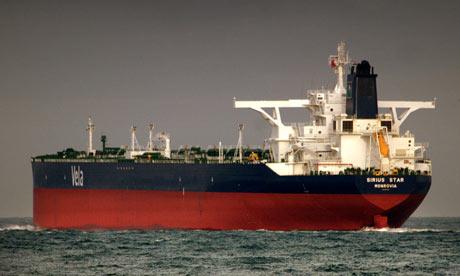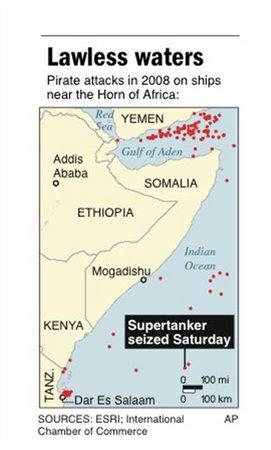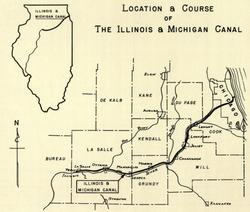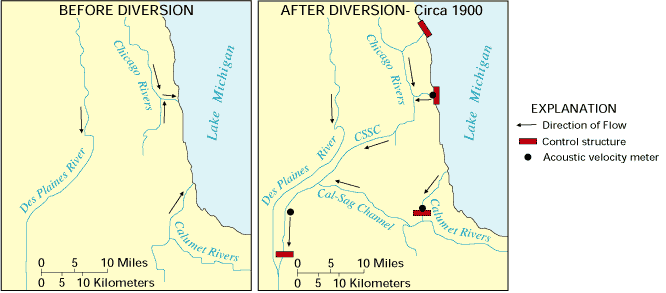Pirates
Suddenly pirates are back! Swashbuckling, boarding ships, taking the loot to their lairs and holding
hostages for ransom. But the setting is not the Caribbean or the route between Europe and the Americas,
but the waters off the coast of Somalia. The latest prize is a loaded Saudi oil tanker worth $100 million
dollars. One wonders what the ransom demand will be?

- Pirates Anchor Hijacked Supertanker off Somalia Coast
November 18, 2008
http://www.guardian.co.uk/world/2008/nov/18/somalia-oil
- The Saudi Arabia-owned supertanker hijacked by Somali pirates in a raid several hundred
miles out to sea is understood to have anchored off the coast of Somalia. The Sirius Star,
which is fully loaded with crude oil, is understood to be at anchor close to a headland called
Raas Cusbad, near Hobyo.
Operating in a broad area of the Indian Ocean, the Somali pirates have become emboldened by success.
The Saudi ship was taken some 430 miles south of the Gulf of Aden, the mouth of the Red Sea where
ships come close to the Somali coastline. The problem for the many nations using these shipping lanes is
international law. Bottom line: Somali has a weak government who cannot police the pirates operating off
their shores, and international law prevents an aggressive attack against the pirates.

- Pirates Anchor Hijacked Supertanker off Somalia Coast
November 18, 2008
http://www.guardian.co.uk/world/2008/nov/18/somalia-oil
- NATO and other international warships have increased patrols around northern Somalia to
try to deter the heavily armed Somali pirate gangs who have seriously disrupted one of the
world busiest shipping lanes. The pirates are holding about a dozen vessels hostage and
more than 200 foreign crew. They are believed to have already netted more than £20m in
ransoms this year. Most of the captured ships were attacked in the Gulf of Aden, which
connects the Red Sea to the Arabian Sea. But the seizure of the Sirius Star, a new ship more
than 300 metres long and weighing three times as much as a typical aircraft carrier, took
place in unpatrolled waters, hundreds of miles south of Somalia, at a latitude intersecting
with Tanzania. The ship was on course to sail around the Cape of Good Hope to the US
when it was seized.
So lucrative is the crime - a typical western-owned ship can fetch more than £1m - that there
are now at least five Somali pirate gangs employing more than 1,000 gunmen, according to
the East African Seafarers' Association in Mombasa. Between July and September there
were 47 attacks off Somalia's coast, the longest in Africa, and 26 were successful. The US
navy said shipping firms were partly to blame for the hijackings. 10 out of 15 of the most
recent attacks around Somalia involved ships that had ignored the IMB's advice to stay
about 250 miles away from the coast or had failed to employ security guards on board.
Some of the more dramatic seizures and attempts over the past few months include a shipment of grain
from Hong Kong bound for Iran, a Ukraine vessel carrying 33 battle tanks, and a Thai fishing vessel.
Apparently, any size and any cargo will do. All are under attack.

- Hong Kong Grain Ship Hijacked by Pirates
November 18, 2008
http://www.alertnet.org/thenews/newsdesk/T332831.htm
- A Hong Kong cargo ship loaded with wheat bound for Iran has been hijacked by pirates in
the Gulf of Aden. There were 25 crew members on board, none of them from Hong Kong or
the Chinese mainland. The ship was carrying 36,000 tonnes of wheat to Iran's Bandar Abbas
port.
-
- As Somali Pirates Get Bolder, Policing Them Gets Tougher
November 19, 2008
http://news.yahoo.com/s/time/20081119/wl_time/08599186040400
- Two months ago, when Somali pirates captured a Ukrainian vessel carrying 33 battle tanks,
the temptation may have been to laugh them off as a bunch of ragtag local gunmen who had
improbably gotten lucky. The Ukrainian vessel remains one of 11 captive vessels currently
moored off pirate ports as ransom negotiations continue.
-
- Somali Pirates Hijack Thai Fishing Boat, 16 Crew
November 19, 2008
http://apnews.myway.com/article/20081119/D94HTRU80.html
- A Thai ship with 16 crew members was hijacked in the Gulf of Aden, where Somalia-based
pirates appear to be attacking ships at will. The Thai ship, which was flying a flag from the
tiny Pacific nation of Kiribati but operated out of Thailand, made a distress call as it was
being chased by pirates in two speedboats but the phone connection was cut off midway.
The success of the Somali pirates has emboldened others, elsewhere, to get into the business.
- Danish Oil Ship Briefly Seized off Nigeria
November 18, 2008
http://news.yahoo.com/s/ap/20081118/ap_on_bi_ge/piracy_denmark_ship_1
- A Danish shipping group says one of its vessels has been released after being hijacked for
nearly 30 hours in Nigeria's southern oil region. He says the ship was headed to Warri in
southern Nigeria with oil exploration equipment when armed men boarded the ship Sunday.
The ship and its Filipino crew were released about 30 hours later. It was not immediately
clear who the hijackers were and why they seized and released the ship.
Where the solution would seem easy, since there would be no contest between the pirates and the military
might of the countries wishing to protect their ships' passage, there are legal impediments.
- Crackdown Faces Waves of Obstacles
November 17, 2008
http://www.ft.com/cms/s/0/a256c030-b4d7-11dd-b780-0000779fd18c.html
- Western governments have stepped up attempts to crack down on piracy off the coast of
Somalia by contributing to international maritime forces aimed at confronting the hijackers.
But although three separate task forces will be operating in the Gulf of Aden by the end of
this year - two of them under NATO and European Union flags - many western experts
believe that a successful crackdown faces a host of difficulties. At the top of the list is
concern that nothing can seriously be done to combat piracy while the government of
Somalia allows the phenomenon to thrive. One issue of particular concern to western
governments is that, although naval forces from western states can disrupt piracy
operations, international law makes it difficult to arrest and prosecute the pirates in foreign
jurisdictions. The UK government is therefore exploring the possibility of signing
memorandums of understanding with neighbouring states such as Kenya to allow pirates to
be prosecuted there.
Where criminal intent is clear, warships can act, however.
- Indian Warship Fights Somali Pirates
November 19, 2008
http://www.ft.com/cms/s/0/4cf8be6e-b611-11dd-89dd-0000779fd18c.html?nclick_check=1
- An Indian warship deployed in the Gulf of Aden fought Somali pirates and destroyed their
vessel after a brief battle. Two accompanying speed boats sped away after the main vessel
was blown up. Naval officers on board the warship said they spotted pirates moving on the
deck with rocket propelled grenade launchers. India deployed INS Tabar, a naval warship,
to escort Indian ships after the country's shipping firms said they were losing $450,000 a
month on cost overruns and delays in meeting deadlines. Crew members are reluctant to sail
in the Gulf of Aden, one of the world's most important sea trade routes, fearing attacks by
pirates.
Will this phenomenon continue? It is doubtful the situation will improve, as the UN has yet to act, and a
concerted effort to eliminate the pirates, or counteract them, has not yet been taken. Is this a phenomenon
likely to emerge after the pole shift, when communications and law enforcement are hindered? Yes! The
Zetas have long warned that roving gangs will be a short term problem after the pole shift, and have
advised on what steps should be taken to avoid and counter them.
ZetaTalk Advice 7/15/1995: Conscientious groups of Service-to-Other humans, having prepared,
will have food and shelter. There will be laughter coming from their midst, as they find life goes on
and the good things they held precious are still in their lives. The young will grow and be curious
and educated. Music still comforts and scientific discoveries still intrigue. The Service-to-Self,
having not bothered to prepare, will look to these communities as a place to raid. This will be a
decreasing problem, as time goes on. We have stated that the Service-to-Self humans will die out
on Earth, and this is in part because they do not nurture their young, but primarily because those
prone to this orientation will not reincarnate here. This is not a matter in their control, over which
they have a choice.
But what about the interim, when various humans of mixed orientation or distinct Service-to-Self
orientation look to the Service-to-Other communities and consider a raid? There will be assistance
in these matters, from ourselves and others. Primarily this assistance will be in the form of
blockage, where the Service-to-Self humans either cannot find the communities, cannot see them,
or are distracted in some way. In this regard we advise these communities to be remote and not
advertise themselves. Those who are to find you will do so, as they will be guided to your location.
Secondarily, this assistance will come in the form of active repelling, where the Service-to-Self will
find their blows or missiles do not land as expected, but turn somehow upon themselves, perhaps
blowing up prior to being launched or the like. It is best, therefore, for these communities to focus
on survival, and life after, and minimally on self defense. The best defense is a well chosen
location.
These dramas, where those of good heart are forming communities after the pole shift and repelling raids,
is depicted in the short story I wrote - "The Passage".
Chicago Canals
The Chicago canals are back in the news, this time because of invasive species moving into the Great
Lakes via the Mississippi River.
- Scientists: Reverse Age-Old Engineering Or The Great Lakes Suffer
November 12, 2008
http://www.huffingtonpost.com/2008/11/13/scientists-reverse-age-ol_n_143499.html
- Connections engineered more than a century ago between the Great Lakes and the
Mississippi River watershed should be changed to block the advance of invasive species that
can cause irreversible damage. Separating the two basins is the only way to stop the transfer
of some species, including the voracious Asian carp that is within 50 miles of Lake
Michigan. Millions also have been spent on electrical barriers across the Chicago Sanitary
and Ship Canal south of the city to keep Asian carp out of Lake Michigan. There are no
natural connections between the Great Lakes and Mississippi River watersheds. More a
century ago, engineers linked them with a complex network of manmade canals and existing
rivers to reverse the flow of the Chicago River and keep waste from flowing down it to Lake
Michigan, which Chicago uses for drinking water.
Most people outside of the Chicago area are probably unaware that a series of canals were constructed
over 100 years ago to allow waste water to flow away from the Great Lakes (which Chicago uses for
drinking water) and to facilitate barge travel between the great Mississippi River and Chicago. The first
such canal, a single connection known as the Illinois and Michigan Canal, was constructed in 1848.

- Illinois and Michigan Canal
http://en.wikipedia.org/wiki/Illinois_and_Michigan_Canal
- The Illinois and Michigan Canal ran 96 miles (155 km) from the Bridgeport neighborhood in
Chicago on the Chicago River to LaSalle, Illinois, on the Illinois River. It was finished in
1848 and allowed boat transportation from the Great Lakes to the Mississippi River and the
Gulf of Mexico. The canal enabled navigation across the Chicago Portage and helped
establish Chicago as the transportation hub of the United States, opening before railroads
were laid in the area. It ceased transportation operations in 1933.
The construction of the second canal was completed in 1900, and involved multiple connections to the
Great Lakes. This canal was much broader and deeper than its predecessor.

- Chicago Sanitary and Ship Canal
http://en.wikipedia.org/wiki/Chicago_Sanitary_and_Ship_Canal
- The Chicago Sanitary and Ship Canal, historically known as the Chicago Drainage Canal, is
the only shipping link between the Great Lakes (specifically Lake Michigan by the Chicago
River) and the Mississippi River system, by way of the Illinois and Des Plaines Rivers. The
canal also carries Chicago's treated sewage into the Des Plaines River. Before completion of
the canal in 1900, the sewage of Chicago was dumped into Lake Michigan, the city's
drinking water supply. The canal is part of the Chicago Wastewater System, operated by the
Metropolitan Water Reclamation District of Greater Chicago. The system has been named a
Civil Engineering Monument of the Millennium by the American Society of Civil Engineers
(ASCE). The Chicago Sanitary and Ship Canal is 28 miles (45 kilometers) long, 202 feet (62
m) wide, and 24 feet (7.3 m) deep. Prior to its construction, the Illinois and Michigan Canal
connected the same waterways for boat travel.
Per the Zetas, there is more to worry about with these canals than Asian Carp. During the pole shift, with
its renting earthquakes and tears states bordering the Great Lakes can expect that these canals will
rupture and allow Lake Michigan to pour toward the Mississippi River. Where this will not empty Lake
Michigan, it will devastate the city of Chicago, as water to replenish and maintain the canal is carried
under the city of Chicago.
ZetaTalk Chicago 2001: Lying deep under the city of Chicago are aqueducts put in place by man,
as well as many channels above ground, which connect in one manner or another Lake Michigan
and the rivers to the south. Man has built these, and man will suffer when the water goes on the
move. Man-made barricades will crumble, and the worst nightmares will ensue.
Wobble Weather
Weather maps are reflecting the effects of the wobble. Note that the N American continent is far too cold
over the mountain states in the SW United States. Normally polar air drops down over the N American
continent in line with the jet stream. The cold dips down from Canada over the Midwest, leaving both
coastlines warmer than the center of the continent. But at no time is air warmer for almost a thousand
miles to the north of a cold spot.

Per the Zetas, this is just another example of the Figure 8 wobble that has been the pattern since early
2004 due to the presence of Planet X.
ZetaTalk Explanation 11/15/2008: The key change in the wobble analysis done during
October/November 2008 was the violence of the push against the magnetic N Pole when late
afternoon in the N American continent arrived. Prior to this point the N American continent had
wobbled such that the Sun was too high in the sky, creating warmer than expected weather for the
N American continent. What happens to the land under an air mass when it is shifted so suddenly?
The air does not move with the globe, so the land becomes suddenly colder in late afternoon,
having been forced under the polar air lingering over Canada. This change in air mass
temperature is primarily felt in higher altitudes, as the air mass closer to the ground is more likely
to be dragged along with the land when it moves. At higher altitudes, the air is thinner, and thus
not as cohesive. Then night falls over the N American continent, with the wobble twisting the
globe to the right and then to the left. The N American land mass is forced under the air hovering
over the Atlantic and Pacific oceans along the coastlines. Since oceans retain a steadier
temperature, this tends to warm both coastlines of the N American continent. But the inland
temperature, especially at high altitudes, is not affected by this coastal influx of warm air, and
retains the cold it has accumulated when the wobble pushed the N American continent up into the
polar north. There is no other explanation for the distinct cold spot over Colorado and Wyoming,
which is colder than all surrounding areas including those states that border Canada and the land
mass of Canada itself.
You received this Newsletter because you Subscribed to the ZetaTalk Newsletter service. If undesired, you can quickly
Unsubscribe.
|

